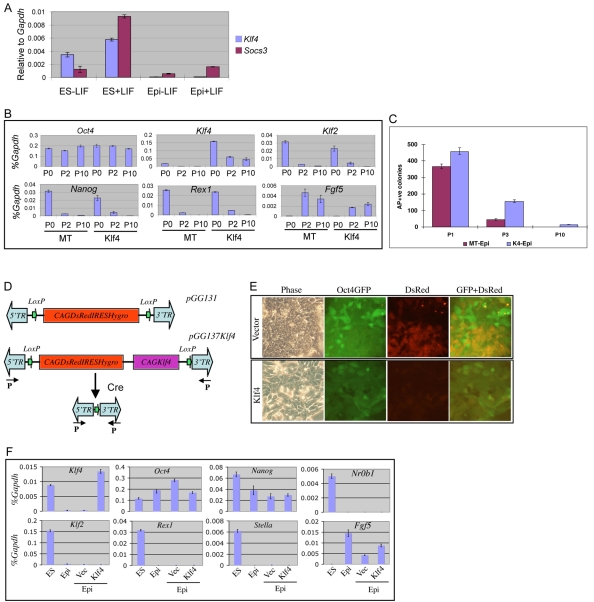Fig. 2.
Klf4 neither prevents ES cell differentiation into EpiSCs nor converts an EpiSC population into ES cells in the presence of activin and FGF. (A) qRT-PCR analysis of Lif induction of Klf4 in ES cells but not in EpiSCs. Cells were stimulated with Lif (+LIF) for 1 hour. (B) ES cells constitutively expressing Klf4 acquire an EpiSC marker profile in Fgf2 plus activin A. MT, empty vector transfectants. P0, P2 and P10 indicate passage numbers in Fgf2/activin. (C) Constitutive Klf4 expression permits continued recovery of ES cell colonies after culture in activin and Fgf2. One thousand cells were plated for each sample in triplicate at the indicated passage (P) number. MT, empty vector transfectants; K4, Klf4 transfectants. (D) PiggyBac vector for expression of Klf4 (pGG137Klf4), and control PiggyBac vector (pGG131). Arrows (P) indicate PCR primers used to amplify the PB LTR fragment after Cre-mediated recombination. (E) Hygromycin-selected Klf4 and control vector-transfected EpiSCs. (F) qRT-PCR analysis showing that forced Klf4 expression does not induce ES cell marker gene expression in EpiSC culture. ES, ES cells; Epi, EpiSCs; Vec, EpiSC transfected with control vector pGG131; Klf4, EpiSCs transfected with pGG137Klf4. y-axis, relative expression normalised to Gapdh.

